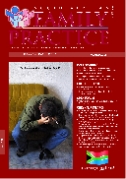Impact of Recent Evidence on Use of Hormone Therapy in the South African Private Sector (2001-2005)
Keywords:
Hormone Therapy (HT), South Africa, Women’s Health Initiative
Abstract
Background: Globally, the release of the results from the estrogen plus progesterone therapy (EPT) arm of the Women’s Health Initiative (WHI) in July 2002 started a process of reconsideration of the rationale behind hormone therapy (HT). This process was accelerated after the release of the results from the estrogen-only (ET) arm of the same study. The results of the WHI reinforced the indications of HT to alleviate vasomotor symptoms and prevent the bone loss associated with early menopause, but refuted the possibility of cardioprotective effects and raised uncertainty around the risk of breast cancer for long-term users. In response, new guidelines and Position Statements were developed to aid healthcare practitioners and patients in various countries, including in South Africa. The dissemination and penetration of all this information has been assessed in a number of countries, but the extent of its effect on the South African market is not known. Accordingly, the aim of this study was to assess the use of HT in the South African private sector from 2001 to 2005 Methods: Monthly HT sales data for January 2001 to October 2005 were obtained from IMS HEALTH (SA). Three successive periods were compared: (1) January 2001 to June 2002 (discontinuation of the WHI estrogen plus progestogen arm), (2) July 2002 to February 2004 (the termination of the WHI estrogen only arm) and (3) March 2004 to October 2005. Results: Overall, sales of HT fell 6.9% between periods 1 and 2 and 14.6% between periods 2 and 3. The total sales of ET predominated being more than double those of EPT. For ET, sale of conjugated equine estrogen (CEE) preparations exceeded those of non-CEE ET preparations, while for EPT preparations the reverse was true. The decline in ET sales was mostly accounted for by the fall in sales of CEE, 9.8% and 20.6% for the two periods respectively. There was an increase in sales of both low-dose CEE and non CEE, though the magnitude of increase for the latter was much greater. Throughout the entire study period, CEE 0.625mg tablets were found to account for the greatest sales volumes. Private sector sales represented 74.4% of total national HT sales over this period. Conclusion: The release of the WHI findings resulted in a modest fall in HT sales in South Africa, less dramatic than that reported elsewhere. This change in prescribing cannot be attributed to any single factor. Publicity, adherence to new guidelines and pharmaceutical marketing may all have contributed. Guidelines need to be updated as new research continues to be published. There is also a need to periodically review prescribing trends, and to assess compliance with evidence-based guidelines, in order to improve the quality of medicines use. The majority of prescriptions for HT in South Africa are written by general practitioners rather than specialists. It is thus imperative that guidelines are appropriately framed for this market, as well as interpreted and applied.
Published
2008-09-02
Section
Original Research
By submitting manuscripts to SAFP, authors of original articles are assigning copyright to the South African Academy of Family Physicians. Copyright of review articles are assigned to the Publisher, Medpharm Publications (Pty) Ltd, unless otherwise specified. Authors may use their own work after publication without written permission, provided they acknowledge the original source. Individuals and academic institutions may freely copy and distribute articles published in SAFP for educational and research purposes without obtaining permission.

